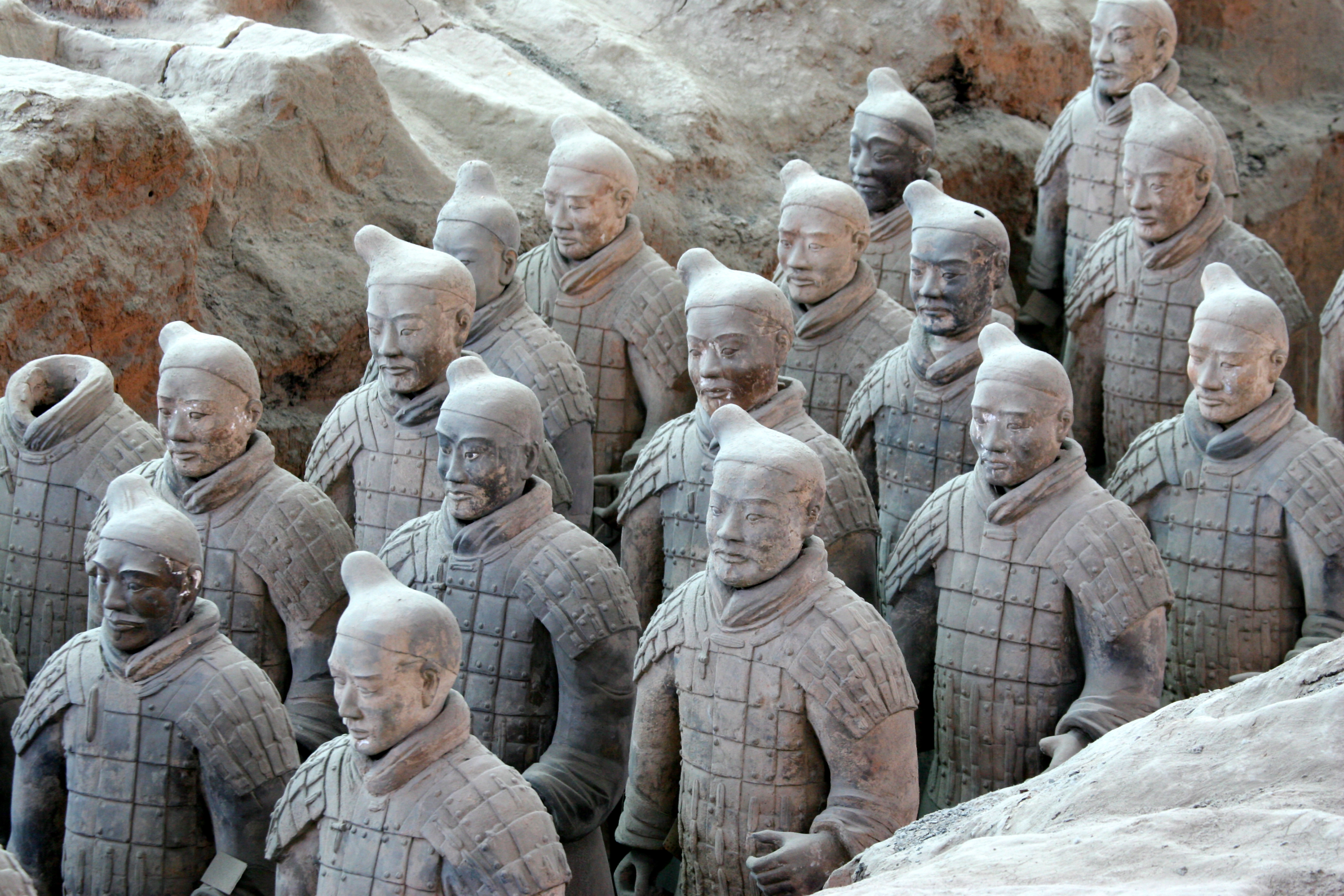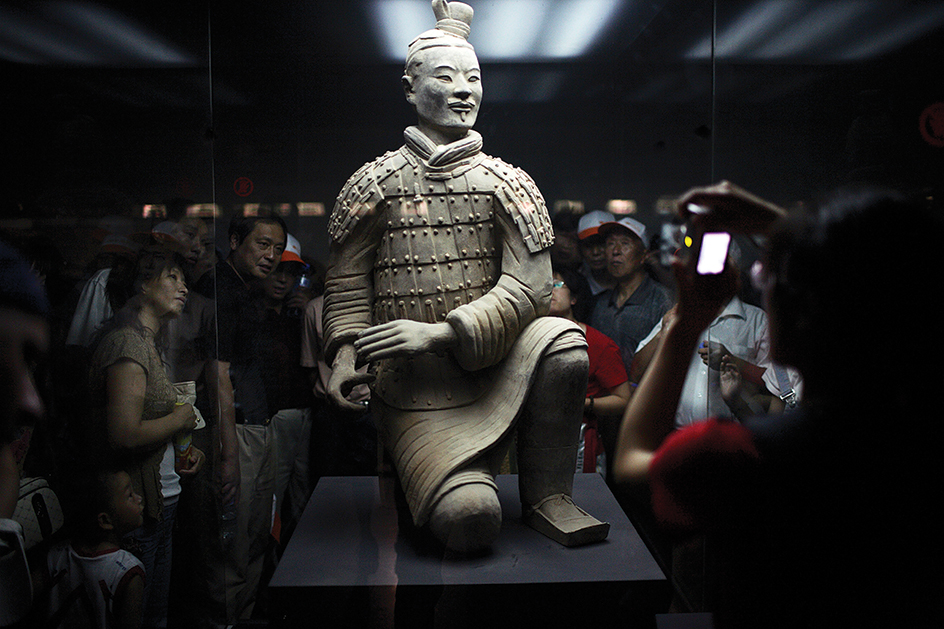Terra-cotta army of Xi’an, << shee ahn, >> is a collection of ancient, life-sized statues of soldiers found in burial pits near Xi’an, China. Over 7,500 terra-cotta (baked clay) statues are buried in three large pits at the site. The site is part of the tomb complex of Shi Huangdi. He founded the Qin << chihn >> dynasty about 221 B.C. and became China’s first emperor (see Qin Dynasty; Shi Huangdi).

Archaeologists have excavated parts of the burial pits holding the terra-cotta army. They determined that each figurine was handmade from several hollow pieces fired and assembled before burial. The figurines were modeled on real-life warriors of the Qin army. The statues show officers, foot soldiers, cavalrymen, and archers standing, kneeling, or in other poses. Most of the statues hold actual weapons. The soldiers are arranged in battle formation. Statues of more than 600 horses and 100 chariots accompany the soldiers. Many of the statues were painted with colors. However, nearly all of the colors have since faded.

The terra-cotta army was discovered in 1974 by farmers. The farmers noticed ceramic shards in the ground where they were digging a well. Archaeologists have determined the figurines were buried in 210 B.C. as part of the emperor’s tomb complex. Most scholars believe the statues were intended to guard the emperor in the afterlife. The tomb itself is about 1 mile (1.6 kilometers) west of the army. Archaeologists have not excavated the emperor’s tomb.
